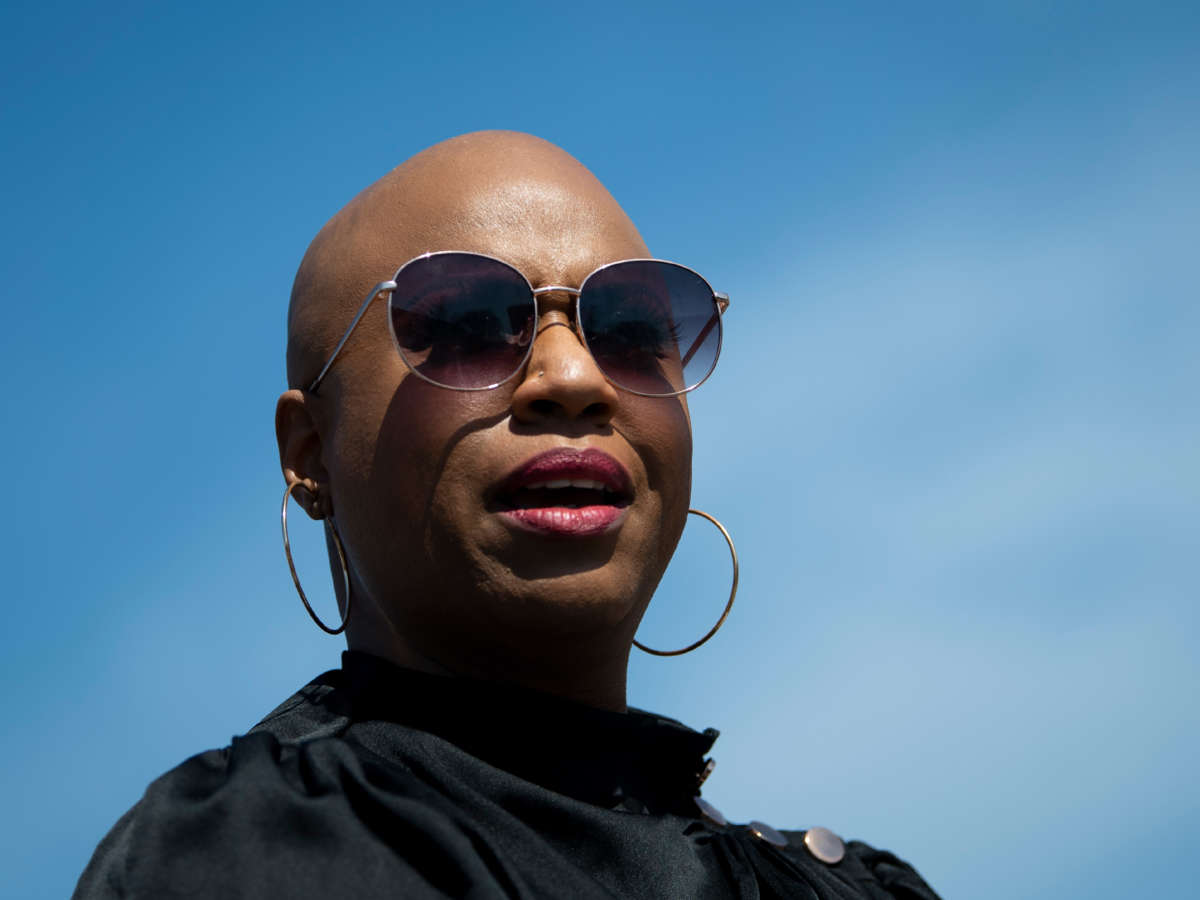A group of Democrats and progressives sent a letter to the Biden administration this week asking officials to stop allowing police departments from accessing weapons from the military, saying that the militarization of law enforcement is causing increased police violence, especially against Black communities.
Representatives Ayanna Pressley (D-Massachusetts) and Henry C. Johnson (D-Georgia), and Sen. Brian Schatz (D-Hawaii) led their colleagues in the effort to urge administration officials to follow up on President Joe Biden’s police reform executive order that he signed earlier this year, which pledged to investigate the impact of and potentially ban the transfer of military weapons to police.
The lawmakers say that allowing police to use such weapons actively makes communities less safe and only enhances law enforcement officers’ mindset that they are in combat with the public. Indeed, research backs up this claim; a study published in 2017 found that, in counties that received militarized weapons, police killed over twice as many civilians as in counties that didn’t receive any military weapons.
“Militarized law enforcement increases the prevalence of police violence without making our communities safer,” the lawmakers wrote. “Furthermore, the negative effects of police militarization disproportionately affects communities of color.”
The letter was signed by 22 Democrats and progressives in the House and the Senate, including Representatives Mondaire Jones (D-New York) and Rashida Tlaib (D-Washington) and Sen. Bernie Sanders (I-Vermont). A wide swath of human rights groups also supported the letter effort, including progressive, labor and anti-discrimination groups.
The lawmakers call for weapons listed in Biden’s executive order, including high-caliber firearms, gun silencers, grenades and grenade launchers, armored vehicles, weaponized drones, and other deadly weapons, to be on the “Prohibited Equipment List.” The list was established in 2016 under an order signed by former President Barack Obama, which prohibited law enforcement agencies from accessing certain weapons and equipment.
Currently, there are two federal programs by which the police receive most military-grade equipment like tear gas, rubber bullets and armored vehicles – via direct purchase, or as is more often the case, free of charge, through the 1033 program. The practice is so common, in fact, that there is an estimated market worth $20 billion around military weapons transfers to police. The exact value of the market is unknown as there is very little oversight of the transfers – perhaps deliberate, in order to obscure the links between the two entities.
Police and prison abolitionists say that the police and military are inherently intertwined, whether through weapons-sharing or law enforcement officers’ roles in perpetrating a police state. Short of the ability to reach abolitionists’ goal of defunding the police and military altogether – which they say is the only way to truly end police violence – many human rights groups have called for the end of 1033.
The police’s use of militarized equipment – riot gear, armored vehicles and surveillance helicopters, high-caliber rifles, and more – are often on full display when the public rises up in protest against injustice. These weapons are most often used to suppress movements for Black lives (or in raids and mass killings of Black political advocates), though they were also recently used to silence protesters against the overturning of Roe v. Wade.
Lawmakers have tried to stop the military-to-police weapons pipeline before. In 2020, Schatz introduced an amendment to end 1033, which was later watered down and passed as reforms to the 1033 program instead.


